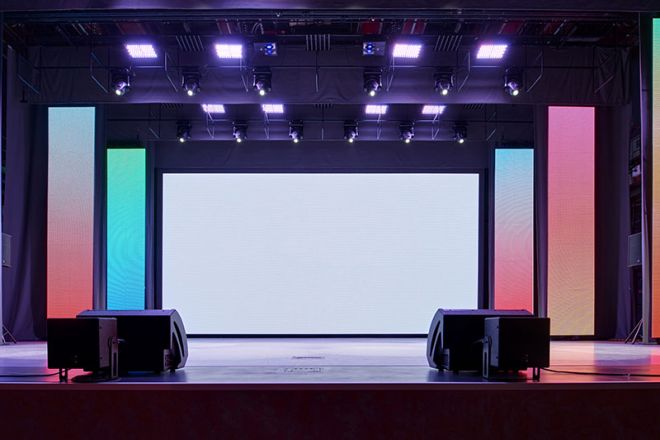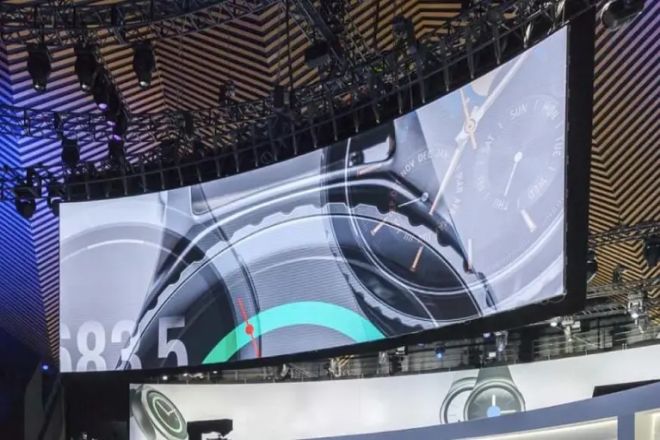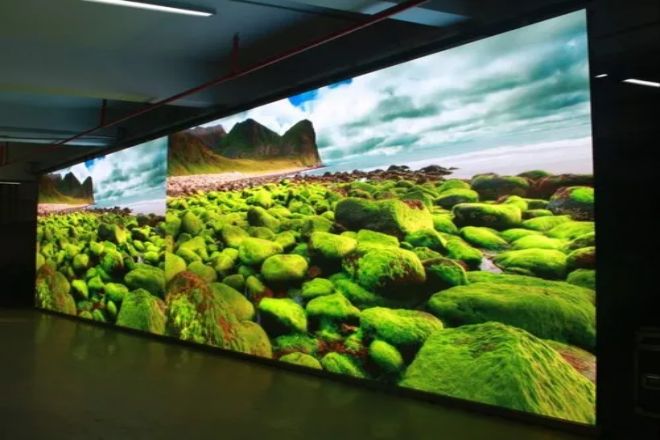Introduction

As a large electrical appliance, the LED display screen is definitely necessary to save power.
So how does LED display save power? This article will give you a detailed understanding of how to save power.
1. What is the power of LED display?
The power of the LED display refers to the power consumed per unit of time.
The formula for calculating power is P=UI, where P stands for power, U stands for voltage, and I stands for current.
The power of the LED display is affected by many factors, including point spacing, display area, manufacturer’s power supply, etc. In addition, the power specifications of the LED display vary according to the use environment.
For example, indoor LED displays usually use low-brightness and small spacing LED lamp beads with low power, and common specifications include 500 watts, 700 watts, and 1000 watts.
Outdoor LED display screens need to use high brightness and large-spacing LED beads to ensure clarity under strong light. The power is high. The common specifications are 1500 watts, 2000 watts, and 3000 watts.
Please note that the actual power of the LED display will also be affected by the scanning method (such as 4 scans, 2 scans, 16 scans, 8 sweeps, static).
Therefore, when selecting the LED display, it is necessary to determine the appropriate power specifications according to the specific use environment and requirements.
2. The wrong way to save power by LED display

First of all, let’s take a look at which methods are wrong, and then please compare your previous practice to see if there is a corresponding one.
In the daily use of LED displays, some ways seem to save power, but in fact, they may be wrong or have limited effects. Here are some common ways to save power:
- Frequent switching power supply:
Some people may believe that frequently turning off and on LED displays can save energy.
However, frequent switching operations may actually increase energy consumption because every time it is turned on, the display needs to consume a certain amount of energy to start and initialize. In addition, frequent power switches may also shorten the life of the display.
- Use inappropriate energy-saving mode:
Although enabling energy-saving mode can save power, using inappropriate energy-saving mode may have a negative impact on the display effect. For example, some energy-saving modes may reduce the brightness or refresh rate of the display, causing the image to become blurred or flicker.
Therefore, when choosing the energy-saving mode, it is necessary to weigh the balance between power consumption and display effect.
- Ignore the heat dissipation problem:
The LED display will generate heat when working. If the heat dissipation is poor, it may cause the temperature of the display to rise, which will affect its performance and life.
Some people may ignore heat dissipation problems in order to save energy, such as reducing the use of fans or blocking heat dissipation holes. However, doing so for a long time may lead to display failure or damage.
- Do not adjust the brightness and contrast:
Some people may not adjust the brightness and contrast of the LED display but maintain the default settings. However, excessive brightness and contrast settings will increase the power consumption of the display.
According to the ambient light and viewing needs, appropriate adjustment of brightness and contrast can reduce energy consumption.
- Use low-quality power supplies and accessories:
In order to save costs, some people may choose low-quality power supplies and accessories to power and connect LED displays. However, these low-quality power supplies and accessories may cause low energy efficiency, poor stability, and even damage to the display.
Therefore, choosing high-quality power supplies and accessories is an important factor to ensure the energy-saving effect and the long-term stable operation of the display.
The above are all wrong methods, and it is necessary to avoid the wrong way to save power. These methods not only cannot save power but may also damage the display function of the LED display.
3. The right way to save power for LED display

There are many ways to save power and reduce energy consumption when using LED displays in daily life. Here are some suggestions:
- Reduce the brightness of the display:
Adjust the brightness of the LED display to the appropriate level to avoid unnecessary energy consumption caused by over-brightness. According to the ambient light and viewing needs, the brightness setting can be reduced appropriately.
- Enable energy-saving modes:
Many LED displays are equipped with energy-saving modes, which can significantly reduce the power consumption of the display. Although the energy-saving mode may have a certain impact on the display effect, this effect is usually acceptable for daily use.
- Arrange the usage time reasonably:
When the LED display is not used, try to turn it off or set it to standby. Avoid long-term ineffective power-on to reduce unnecessary energy consumption.
- Optimize the display content:
Simplify the display interface, reduce the use of animation and special effects, and reduce the power consumption of the display. Use more concise and streamlined images and video content, and avoid using overly complex graphics and color combinations.
- Adjust the refresh rate:
Appropriately reducing the refresh rate of the LED display can also save power. Although the high refresh rate can provide a smoother display effect, it will also increase energy consumption.
- Use energy-saving hardware:
Choose LED display equipment with energy-saving functions, which usually adopts low-power design or specially optimized circuits, which can reduce energy consumption without reducing display quality.
- Regular maintenance and inspection:
Clean and maintain the LED display regularly to ensure that its heat dissipation is good and avoid increasing energy consumption due to poor heat dissipation caused by the accumulation of dust and dirt. At the same time, regularly check whether the circuit and connector are loose or aging, and replace the damaged parts in time.
Conclusion
What you need to know is that the power of the LED display is not saved all at once. These power-saving methods require long-term operation and practice. Therefore, we must persevere.
Finally, if you want to know more about LED displays, please contact us!
